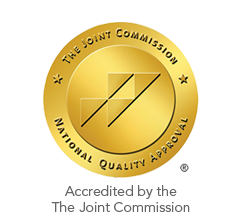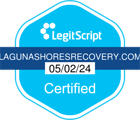Hallucinogens like DMT are popular substances for a quick trip with little repercussions. But are there really no risks when you consume hallucinogenic drugs? It turns out, the dangers of DMT may be more serious than you’d think.
What Is DMT?
DMT (Dimethyltryptamine) is a hallucinogenic substance. It occurs naturally in many species of plants and can even be found in the brains and blood of mammals. DMT can also be produced synthetically. The synthetic forms are typically white or yellow powdered crystals that can be smoked or injected. The natural form is usually brewed into tea or smoked.
When consumed, DMT causes changes to hearing and vision and to the user’s perception of time, color, and self. The effects usually begin within a few minutes of being consumed and usually peak around 35 to 45 minutes. This is how it earns its nickname, “45-minute psychosis.” Someone who has consumed DMT will typically experience:
- hallucinations (hearing and seeing things that aren’t really there)
- a perceived distortion of time
- double vision
- feeling disconnected from the self
- deep introspection
- mixed senses (“seeing” sounds or “hearing” color)
Some less pleasant side effects may include:
- nausea
- increased heart rate
- sweating
- paranoia
- extreme emotions or sensations
- feelings of panic or fear
DMT’s Rise in Popularity
The use of DMT has been studied since around 2007 when it began to increase in popularity. Between 2007 and 2019, the use of DMT became on average five times more common among people who used other substances.
The spike in popularity is due to a number of reasons. First of all, there isn’t as much known about the long-term effects of DMT on the body as there is for substances like heroin, for example. Because of this, many people assume that it is safer than other substances. Like other hallucinogens, DMT is also not chemically addictive, which means that your brain does not continually crave the chemical compounds after it is first exposed. That means that people feel free to try DMT without worrying about being immediately hooked.
Another big reason for the rise in the use of DMT is the growing popularity of Shamanic healing methods and alternate states of consciousness (ASCs) in Western culture. Shamanism is a collection of religious practices and ideals that can be traced back to hunter-gather groups throughout what is now Eastern Europe and Asia. Over time, these practices migrated, as people did, to the Western world, and they are now considered to be deeply tied to Indigenous American culture. Although Shamanism is generally a closed practice, certain Indigenous people have opened the experience of ASCs to non-Indigenous Westerners, sometimes as a form of culturally immersive tourism. Due to the mystification of Indigenous American culture, Shamanic practices have become increasingly popular with non-Indigenous people who wish to experience the spiritual world.
DMT is a popular substance used to induce ASCs in Shamanic practices. When brewed into tea, DMT is often referred to as ayahuasca. Similar to peyote, ayahuasca is used to induce hallucinogenic states of consciousness which give the user an altered sense of reality.
What Are the Dangers of DMT?
Although DMT trips are short-lived and can often be enjoyed safely, there are still risks associated with consuming DMT. The potential dangers of DMT range from physical health risks to psychological issues.
Some of the health risks of DMT include serotonin syndrome, seizures, and cardiac or respiratory arrest. Serotonin syndrome is caused by a buildup of the neurotransmitter serotonin in the brain. Because DMT is chemically similar to serotonin, it can cause serotonin syndrome, which can be fatal. When taken at too high of a dose, DMT can cause seizures and cardiac arrest, which can also lead to brain damage and death. The use of hallucinogens is particularly dangerous when in combination with other substances. This can lead to accidental poisoning and can be fatal.
There are also psychological dangers of DMT. As with any hallucinogen, the experiences had during a trip can be scary and confusing to the user. If an individual becomes convinced that the things they’re seeing are real, they may do something dangerous. In extreme cases, hallucinogens like DMT have been known to lead to self-harm or the harm of others. Some studies have shown that the use of hallucinogens can cause prolonged psychosis even after the trip has ended, even triggering genetic schizophrenia in some cases. Laguna Shores Recovery Center offers a dual-diagnosis program that can help with any co-occurring mental health issues such as this.
Although DMT is not chemically addictive, it’s possible to develop a psychological addiction to any experience. If you or someone you know shows signs of DMT dependence, a treatment center like Laguna Shores Recovery Center could be a big help to getting sober. Our behavioral treatments address a variety of psychological addictions and may help with DMT abuse.
While little is known about the addictiveness of DMT, that doesn’t mean that it’s safe to use. DMT has a long list of potential risks, some of which can be fatal. If you want to learn more about DMT and other dangerous substances, Laguna Shores Recovery Center is a great place to start. We believe in educating people on the dangers of common substances so that they can make informed decisions. We also know that psychological addiction is always a risk when substances are involved, and we want to help. Sobriety is the first step in a life that is all your own. Don’t wait to get help. Call Laguna Shores Recovery Center, located in Orange County, at 954-688-5806.

 Matthew Beck B.A, M.A, LMFT
Matthew Beck B.A, M.A, LMFT 


